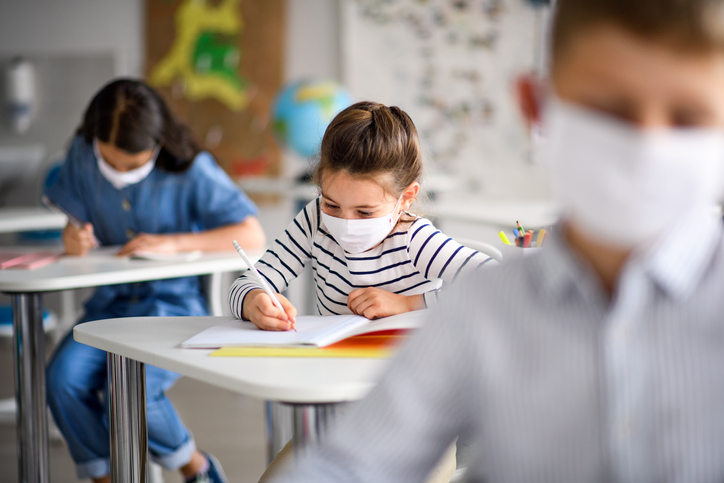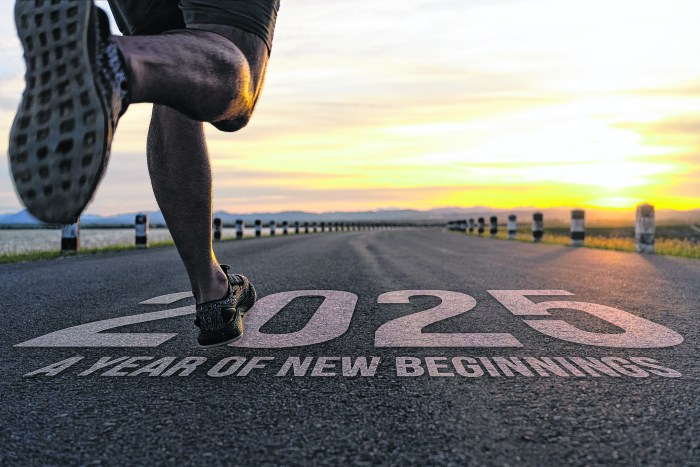The school year is happening, and while the mask debate is just that — a discussion that may go back and forth for hours — here in New York, wearing a face mask in school is required.
Will the requirement change soon? Probably not, as the Covid Delta variant is still a huge concern. Our new governor, Kathy Hochul, has asked state health officials to require a universal mask mandate in both public and private schools. But many parents understandably have concerns about kids mask-wearing all day at school.
How vital is mask-wearing in schools? What are the benefits? For some mask-wearing insight, we chatted with Samantha Lowe, MD, a pediatrician with White Plains Hospital Physician Associates in Armonk, NY, on why mask-wearing matters.
With school going back full time, how important is mask wearing for our students?
Due to the circulating and highly contagious Delta variant, the CDC recommends universal indoor masking by all students (age 2 and older), staff, teachers, and visitors to K-12 schools, regardless of vaccination status. The most effective protection against all COVID strains, including the Delta variant, is vaccination. However, more than 50% of children returning to school are doing so without the benefit of a COVID-19 vaccine. This is occurring for three reasons. First, children under 12 years of age are ineligible for vaccines at this time. Second, there is a percentage of students who meet vaccine eligibility but have chosen not to be vaccinated. And, third, there are other students who meet the vaccine age criteria but are ineligible for vaccines due to other health issues. Because of this, correct mask-wearing for all students, and anyone coming in contact with those students, is an absolute necessity.
Are two masks necessary?
At this time, the CDC recommends wearing a face mask with two to three layers that fits snugly over your face. In February of 2021, the CDC published research suggesting that layering a cloth mask over a surgical mask (double masking) when a mask only has one layer may provide additional protection from potentially infectious particles. However, if your mask already has multiple layers and fits tightly, it’s not necessary to double mask and might make masks uncomfortable to wear and/or hinder vision if they go too high up on the face.
A mask is only protective if your child is wearing it. Because children’s faces vary in size, it has been shown that cloth masks, especially those with adjustable ear straps and a nose cinch fit better than paper masks. Studies have shown that tightly woven cotton fabrics do a surprisingly good job of filtering out particles, and their performance can improve under humid conditions, such as those created when you breathe. Make sure that the cloth masks are thick enough that you cannot see through them, and if possible, add a filter to provide an extra layer of protection.
For special needs kids or children with speech delays, do masks hinder language development? Any tips for parents?
If your child has special needs or speech delays, it’s worth discussing any concerns you may have with your pediatrician based on your child. For those parents, it may also be worth a conversation with your child’s school (for instance, to assure teachers will be wearing clear masks, providing necessary mask breaks etc…). There are also things you can do at home to help. Younger children naturally take visual cues based on a person’s mouth and how that translates to overall emotion and mood. With everyone in masks, you can help your child shift from reading mouths to reading eyes. You can practice this at home while wearing your mask and playing a game – can you guess if I am smiling? Frowning? Laughing based on my eyes alone?
It is sometimes hard to hear what others say underneath their masks, especially if they are naturally soft-spoken. It’s important for you to understand what volume of voice your children can hear clearly. You can model the teacher’s speaking voice to determine if the normal level is understandable or whether a few notches louder may be optimal. Then you can mention this concern to your school and the child’s teacher.
Take as many opportunities as you can to arrange get-togethers with other children and relatives outside so they can benefit from as much full facial visualization as possible when they are not in school.
As kids return to classrooms that can sometimes be hot, are there any tips for them to keep in mind if they feel overheated and overwhelmed with their facemask?
Practice at home in varied climates to find the mask that is most comfortable for your child to wear for extended periods of time. Know your child’s schedule and let them know when they can expect mask breaks during the day. If possible, on very hot days, try to limit their time in masks by driving them to school. Tell your children to advocate for themselves if they feel too hot or panicked by their masks by asking for a mask break in a safe environment. Kids are usually very resilient and get used to wearing masks very quickly in all climates and situations.
This story first appeared on NewYorkFamily.com.
Sign up for Long Island Press’ email newsletters here. Sign up for home delivery of Long Island Press here. Sign up for discounts by becoming a Long Island Press community partner here.






























